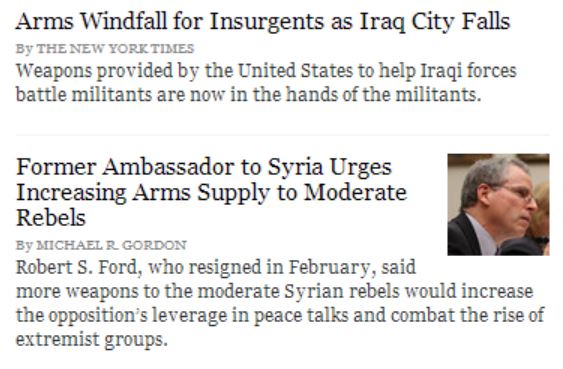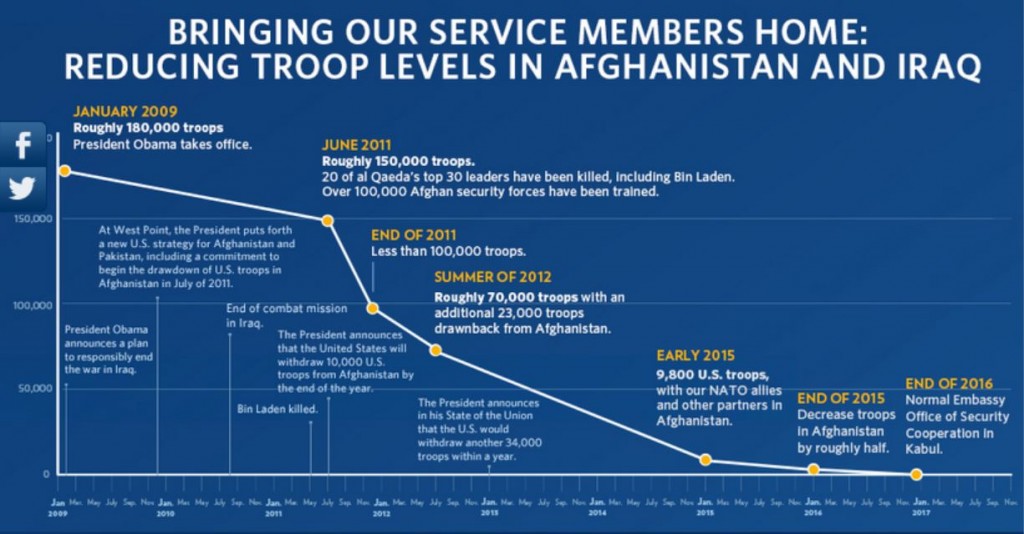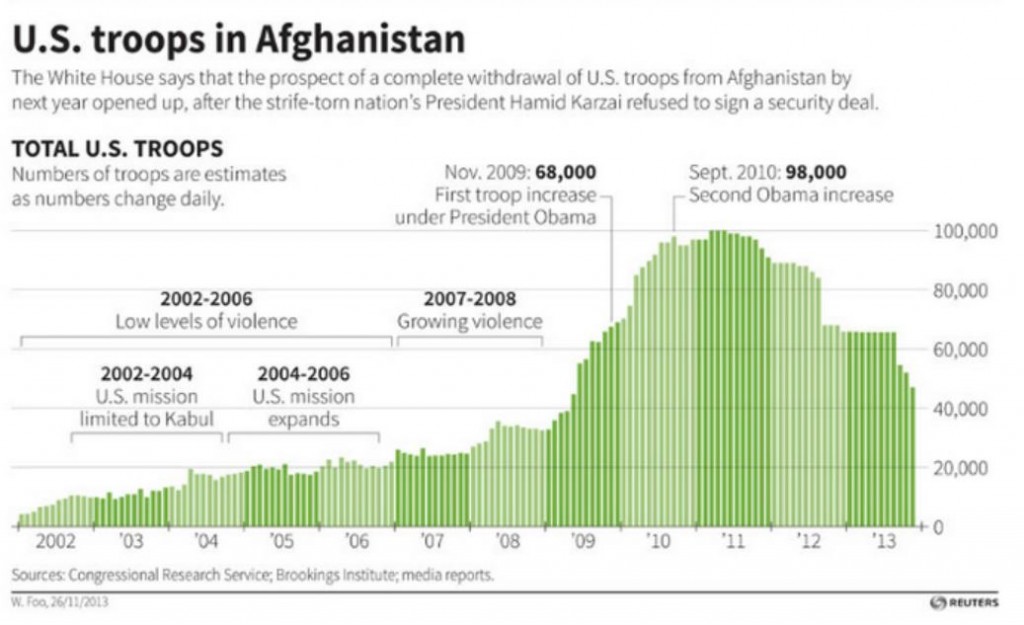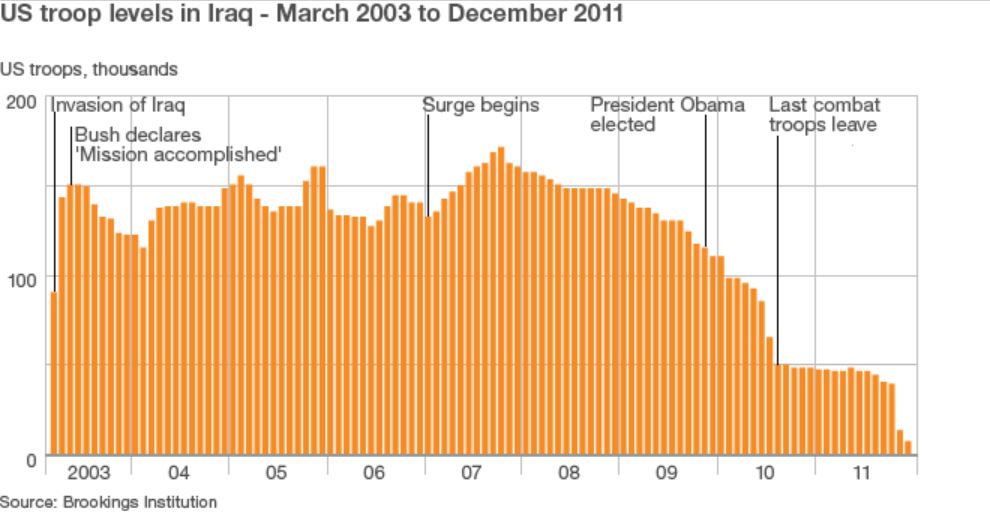One of the most enduring formulas throughout the nearly 13 year US quagmire in Afghanistan has been the persistent claims by our military and their fans that we are making tremendous progress and that the Taliban has been weakened significantly. That formula held true in spectacular fashion for the Afghan election, with broad instant claims of how successful and peaceful voting was. But alas, once real information started coming out, it turns out that election day was in fact extremely violent. Even less noticed is that the facilities of the Independent Election Commission have been attacked since the day of the vote and now it appears that there will be a delay in the runoff election because of that attack. As if that blow is not enough, the “weakened” Afghan Taliban has now announced the date for the start of their spring offensive and have provided a long list of the types of targets they will attack.
Here is ISAF patting itself on the back on the day of the elections because those ANSF troops they trained did so well:
The International Security Assistance Force congratulates the people of Afghanistan on today’s historic election. Today’s success clearly demonstrates that the Afghan people have chosen their future of progress and opportunity.
As the world watched, Afghan National Security Forces provided the opportunity for the Afghan people to choose their new President, securing over 6,200 polling centers across the country. Soldiers and policemen confidently patrolled the cities and countryside to protect innocent civilians and prevent insurgents from disrupting today’s elections. Afghan voters displayed confidence in their army and police, turning out in unprecedented numbers to cast their ballot for the future of Afghanistan.
“The people of Afghanistan can be proud of their security forces,” said General Joseph F. Dunford Jr., ISAF commander. “For months, they’ve conducted planning and security operations to ensure that the conditions were set for inclusive elections. What we saw today as a result of that effort was extraordinary. In addition to their physical performance, what equally impresses me is the sense of responsibility and determination they had in ensuring the Afghan people had a secure environment in which to vote and determine their own future.”
Ah, but that carefully crafted narrative of peaceful elections was bullshit that took several days for the media to pierce. Ten days after the election, the Washington Post had this to say:
But on voting day, the country seemed unusually calm, prompting Afghan politicians to speculate that the Taliban had intentionally allowed the election to proceed.
“I don’t think the other side put too much pressure,” said Hedayat Amin Arsala, a presidential candidate. “They even prevented some people from attacking.”
The statistics tell another story. Data released Monday by the U.S. military in Kabul show that April 5 was, in fact, an unusually violent day, spiking far above the norm, although falling 36 percent short of the peak number of attacks during the 2009 election, one of the bloodiest days of the war.
Of the 286 insurgent attacks during this election, the vast majority (226) occurred in eastern Afghanistan, followed by 21 in the Kandahar area of southern Afghanistan, 17 in the west, 14 in the north, seven in the Helmand region and just one in Kabul.
It now turns out that the fallout from Taliban attacks after the election could be huge, with the runoff possibly delayed:
Independent Election Commission (IEC) Chairman Ahmad Yusuf Nuristani admitted on Wednesday that the runoff round expected between Abdullah Abdullah and Ashraf Ghani Ahmadzai could face delays.
A runoff is required by Afghan law if no presidential candidate gets over 50 percent of votes in the first round. As of now, no one has passed that threshold. Although the runoff round was originally scheduled for May 28, election officials have said a number of setbacks have made it more likely that the round will be delayed.
Mr. Nuristani cited the Taliban’s attack on the IEC’s headquarters in Kabul as the cause of the delay.
“The election law says that a run-off must be held two weeks after the final results’ announcement, but the Taliban launched a rocket attack, and as a result of the attack we lost some of our critical materials, therefore, we will not be able to hold a run-off after two weeks,” he explained.
So the Taliban, despite the early claims of a hugely successful election, has now managed to get a crucial delay in the runoff election. Remember that Hamid Karzai has refused to sign the Bilateral Security Agreement that would allow US troops to stay in Afghanistan after the end of this year. Although both Abdullah and Ghani have said that they would sign the agreement, a delay in the winner taking office increases the odds that the US will simply withdraw completely if they feel there isn’t sufficient time to plan for the number of troops to leave behind.
And the Taliban are pressing ahead, announcing the start of their spring offensive: Read more →




